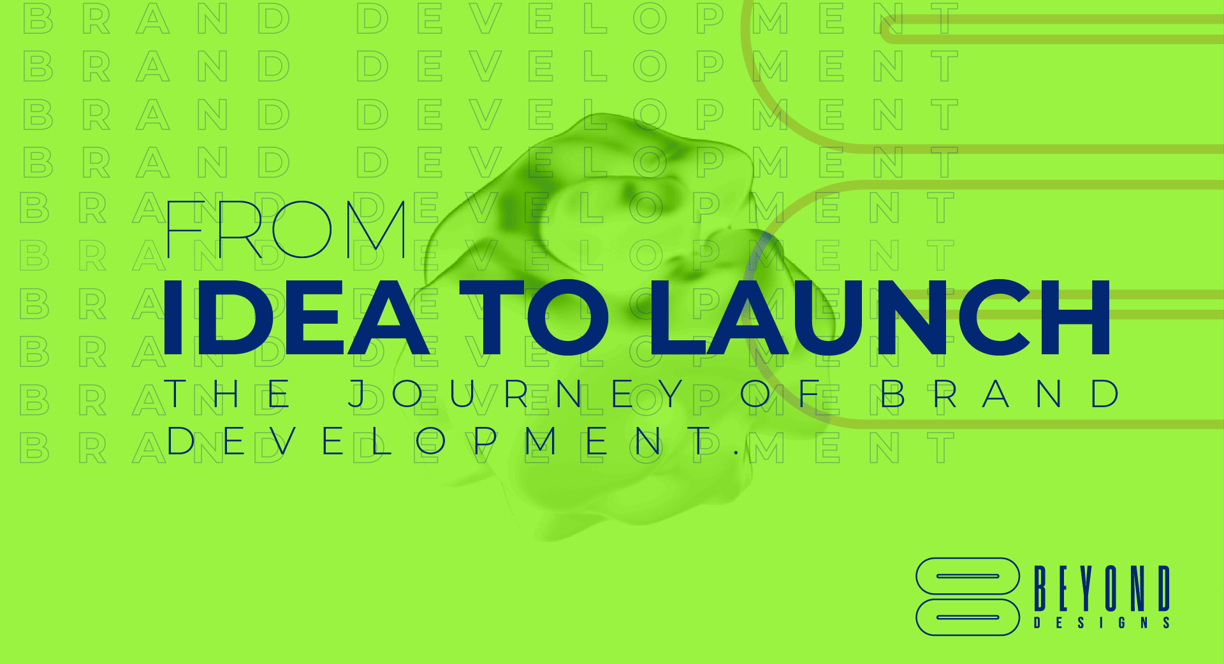From Idea to Launch: The Journey of Brand Development
Beyond Designs
8/13/20243 min read


Creating a brand from scratch is an exciting and transformative journey. It involves turning a simple idea into a living, breathing entity that resonates with your audience and stands out in the marketplace. Whether you're an entrepreneur launching a new venture or a business owner revitalizing an existing brand, understanding the steps of brand development is crucial for success. In this blog post, we'll take you through the step-by-step process of developing a brand, highlighting the importance of each stage along the way.
1. Initial Research and Discovery
The journey of brand development begins with research and discovery. This stage involves understanding the market landscape, identifying your target audience, and analyzing competitors. By gathering insights into what your potential customers need, want, and value, you can start to shape your brand's purpose and positioning. This foundational research helps you make informed decisions that will guide your brand development process.
2. Defining Your Brand’s Purpose and Vision
Once you have a clear understanding of the market and your audience, the next step is to define your brand's purpose and vision. What does your brand stand for? What mission will it fulfill? Your brand's purpose should reflect your core values and the impact you want to have on your customers and the world. A strong vision provides direction and inspiration, guiding your brand's growth and evolution over time.
3. Brainstorming and Concept Development
With a solid foundation in place, it's time to brainstorm and develop concepts for your brand. This stage is all about creativity and innovation. You'll explore different ideas for your brand name, tagline, and overall messaging. Consider how you want your brand to be perceived by your audience and what unique qualities will set it apart from competitors. The goal is to create a brand concept that captures the essence of your business and resonates with your target audience.
4. Designing the Visual Identity
Your brand's visual identity is a crucial element of its overall development. This stage involves creating the visual components that will represent your brand, including the logo, color palette, typography, and imagery. The design should align with your brand's personality and values, creating a cohesive and memorable visual identity that leaves a lasting impression on your audience. A strong visual identity not only differentiates your brand but also builds recognition and trust.
5. Crafting the Brand Voice and Messaging
In addition to the visual elements, your brand's voice and messaging play a vital role in communicating its identity. This stage involves defining how your brand will communicate with its audience across various touchpoints, from marketing materials to customer interactions. Your brand voice should reflect your brand's personality—whether it's authoritative, friendly, innovative, or approachable. Consistent and compelling messaging reinforces your brand's identity and builds a connection with your audience.
6. Developing a Brand Strategy
A brand strategy is the roadmap that outlines how you will position and grow your brand in the market. This stage involves setting clear goals, identifying key messaging pillars, and determining the channels you'll use to reach your audience. A well-defined brand strategy ensures that all your branding efforts are aligned and focused, maximizing the impact of your brand's launch and ongoing presence in the market.
7. Preparing for the Brand Launch
With all the key elements of your brand in place, it's time to prepare for the launch. This stage involves finalizing all branding materials, from your website and social media profiles to packaging and marketing collateral. You'll also develop a launch plan that outlines the activities and campaigns you'll use to introduce your brand to the market. The goal is to create buzz and excitement around your brand, generating interest and engagement from your target audience.
8. Launching the Brand
The brand launch is the moment when all your hard work comes to fruition. It's when you introduce your brand to the world and begin building relationships with your audience. A successful launch requires careful planning and execution, from creating compelling launch content to engaging with your audience on social media and other platforms. Remember, the launch is just the beginning—your brand's success will depend on your ability to maintain momentum and continue delivering value to your customers.
9. Post-Launch Evaluation and Growth
After the brand launch, it's essential to evaluate its success and make any necessary adjustments. This stage involves analyzing feedback, monitoring performance metrics, and refining your brand strategy as needed. The goal is to ensure that your brand continues to grow and evolve in response to market trends and customer needs. By staying agile and responsive, you can build a brand that remains relevant and successful over the long term.
Conclusion
Developing a brand from idea to launch is a complex and rewarding journey. Each stage of the process plays a critical role in shaping a brand that resonates with your audience and stands the test of time. By investing in thorough research, creative brainstorming, strategic planning, and meticulous execution, you can create a brand that not only captures attention but also drives lasting business growth.


